Embark on a delightful journey as we delve into the heart of the kitchen, where humble appliances have quietly transformed the way we start our day.
In this article, we’ll uncover the captivating evolution of vintage toasters, unearthing the magic behind these cherished culinary companions.
The primary technical problem in toaster development at the turn of the 20th century was the development of a heating element which would be able to sustain repeated heating to red-hot temperatures without breaking or becoming too brittle.
The first stand alone electric toaster, the Eclipse, was made in 1893 by Crompton & Company of Chelmsford, Essex. Its bare wires toasted bread on one side at a time.
The problem of the heating element was solved in 1905 by a young engineer named Albert Marsh, who designed an alloy of nickel and chromium, which came to be known as Nichrome.
The first US patent application for an electric toaster was filed by George Schneider of the American Electrical Heater Company of Detroit in collaboration with Marsh.
One of the first applications that the Hoskins company had considered for its Chromel wire was for use in toasters, but the company eventually abandoned such efforts, to focus on making just the wire itself.
The first commercially successful electric toaster was introduced by General Electric in 1909 for the GE model D-12.
The “pop up” toaster was patented in 1919. During the 1920s many new types and brands were launched. Americans bought more than a million electric toasters, usually for use right on the breakfast table in the 1920s.
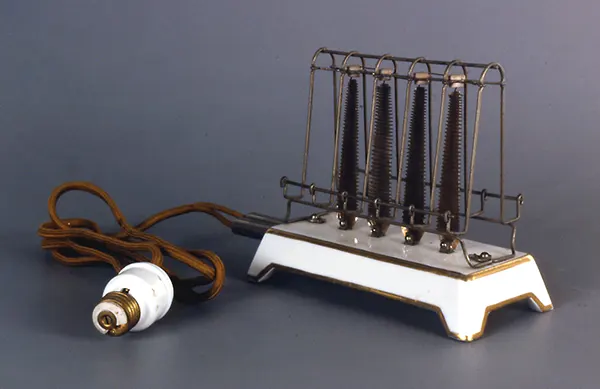
Toaster with an Edison screw fitting, c. 1909.

General Electric Model D-12 toaster, from 1910s.
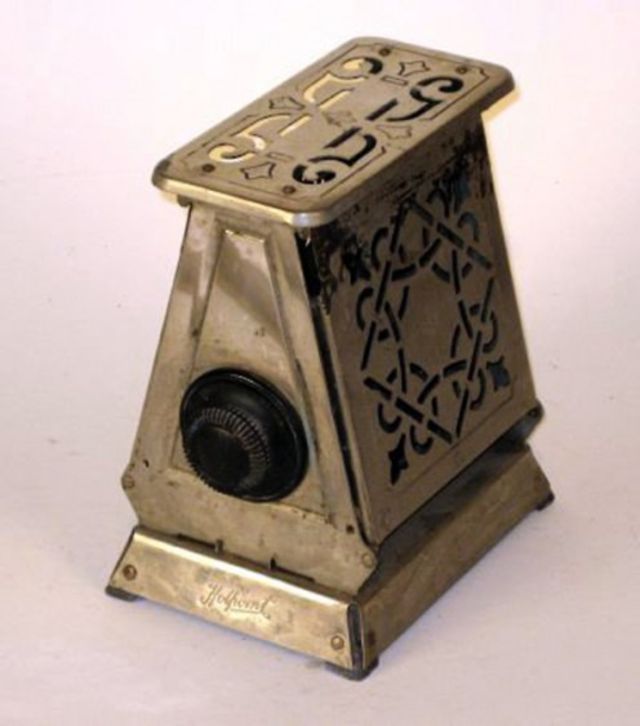
The Turnover, 1920s.
The Turnover was designed with spring-loaded doors on both sides, each accommodating a single slice of bread.
As one side of the bread toasted, the operator would lower the doors to allow the partially toasted side to descend, ensuring even toasting when the doors were closed again.
This toaster was often positioned directly on the breakfast table due to its manual operation, with the task of managing the toasting process falling to the attentive individual in charge of the toast.
The Turnover enjoyed popularity from the mid-1920s to the early 1930s.

The Flopper.
The Flopper showcased metal doors adorned with an attractive cutout pattern, hinged at the bottom. When these doors were shut, they assumed an “A” shape.
In this inventive design, when toasting was complete, the operator simply opened the side doors, and the toast gracefully “flopped” out.
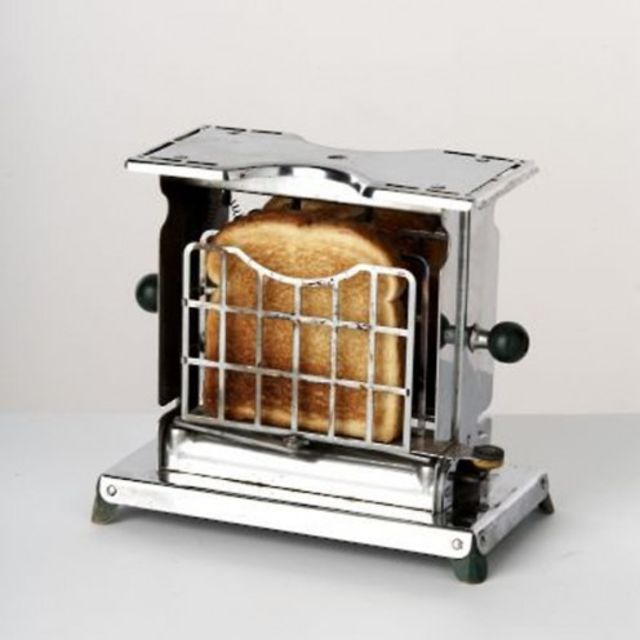
The Swinger.
Swingers showcased a unique swinging basket with a two-sided metal wire enclosure to secure the bread slices. To achieve even toasting on both sides, a simple turn of the knob flipped the bread.
What set the Swinger apart was its ability to brand the toast with a distinctive pattern, adding an appealing touch to the breakfast table.
Interestingly, the first four-slice toaster adopted the Swinger design. Its initial high cost prompted manufacturers to offer convenient payment plans, allowing a broader audience to afford this remarkable addition to their homes.
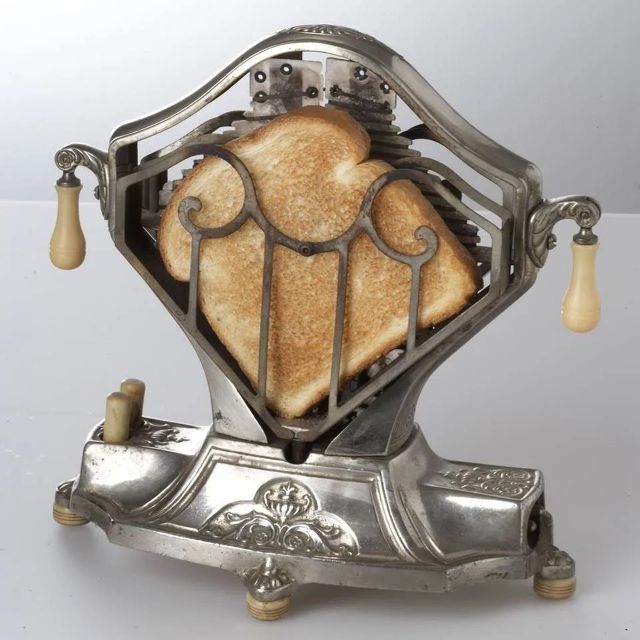
The Sweetheart.
The Sweetheart toaster operated through a pair of buttons positioned at its base. These buttons were responsible for managing each side of the toaster.
Pressing the buttons caused the respective baskets on each side to swing out at a 90-degree angle, facilitating the insertion of bread or the retrieval of toasted slices.
Upon releasing the buttons, the baskets smoothly returned to their original position against the unit.
Further presses of the buttons initiated a rotation of the bread slices in the opposite direction, ensuring even toasting on both sides.

The Pop-Up, 1920s-1930s.
In 1926, Toastmaster introduced the pop-up toaster to the American consumer market. What set this toaster apart was its use of a clock mechanism as a timer for toasting.
The significant innovation was the elimination of the need for users to manually turn the bread, promising consistently perfect toast.
Before 1926, pop-up or automatic toasters were primarily intended for use in restaurants and were considered a luxury in most households. Consequently, many manufacturers continued to produce manual toasters for home use until the 1950s.
Toastmaster’s design featured heating elements on both sides of each bread slice, ensuring even toasting.
Additionally, a convenient lever on the side of the toaster allowed users to adjust the timer, thereby controlling the level of toasting darkness to suit their preferences.
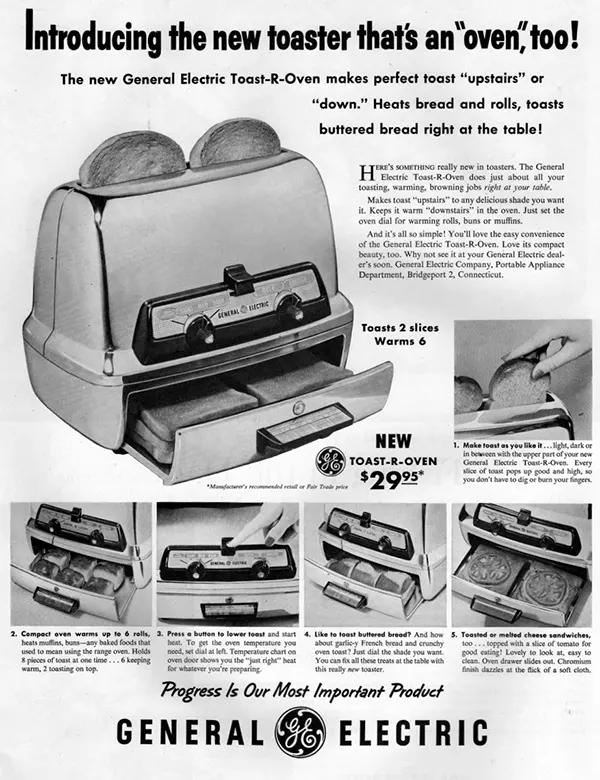
General Electric Toast-R-Oven, 1957.
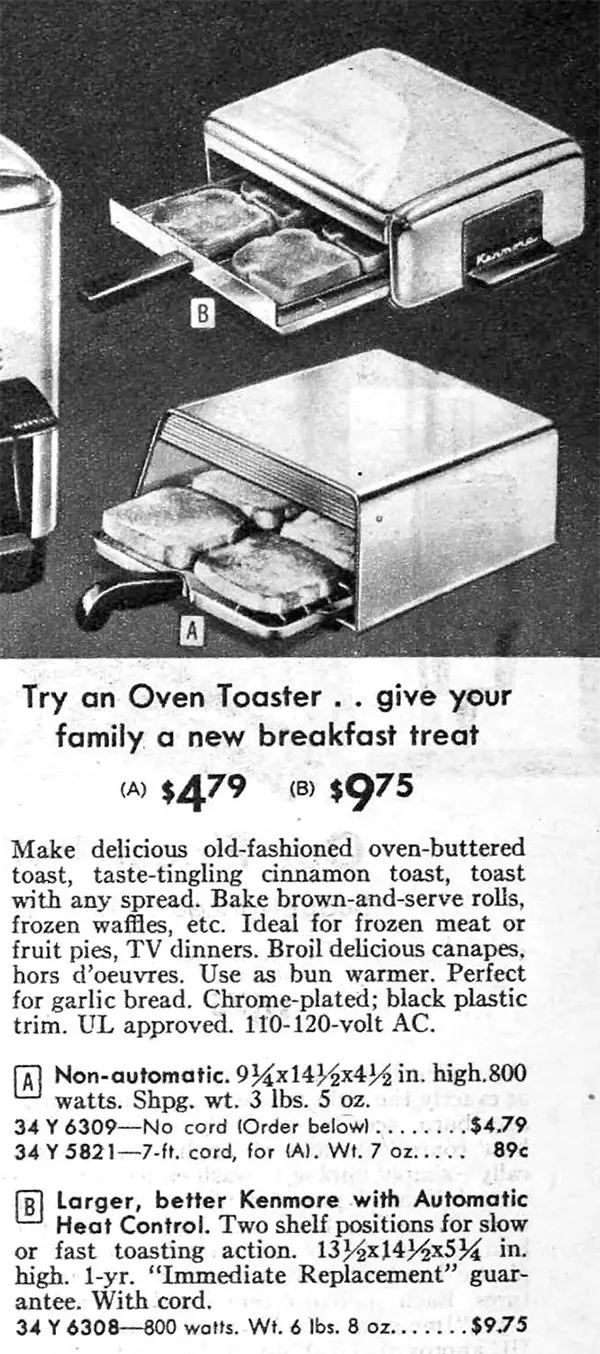
Kenmore toaster ovens, 1957.

General Electric’s Toast-R-Oven. The toaster with window, 1964.
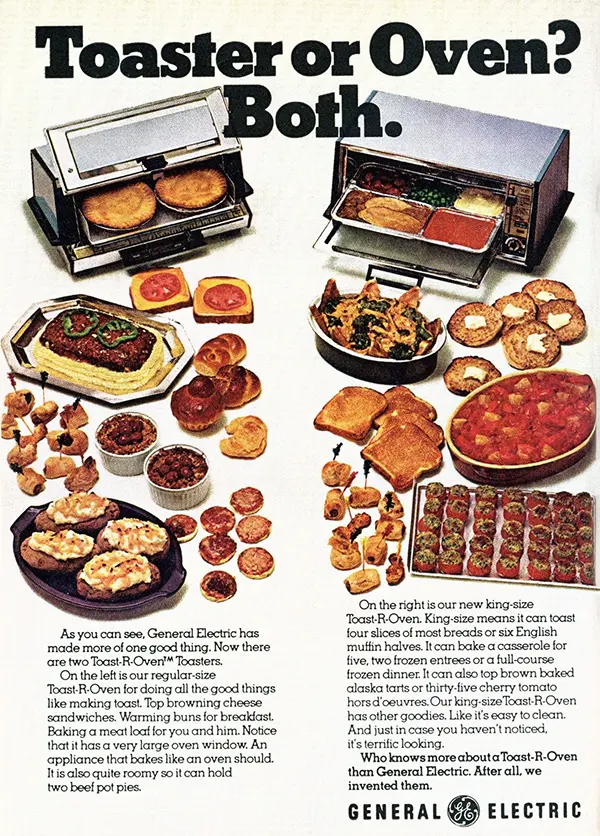
Toaster or Oven? Both, 1972.
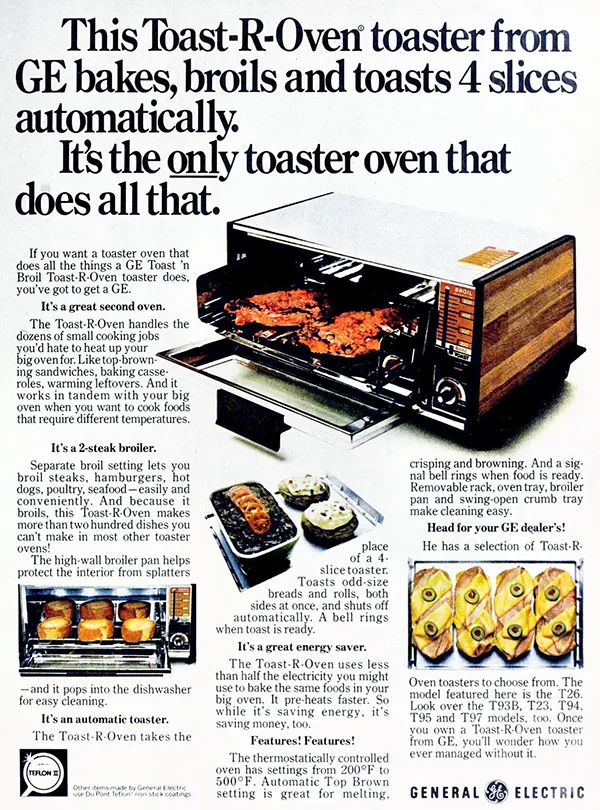
A GE toaster oven from 1972.

Sears toaster oven, 1977.

Compact Toast-R-Oven broiler, 1987.
(Photo credit: Cyber Toaster Museum / Wikimedia Commons / Pinterest).



